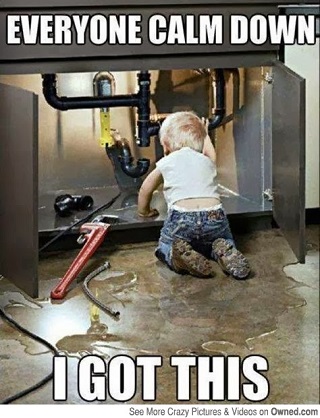From Guest Blogger Lizzie Weakly: The Homeowner’s Guide to Making your Plumbing System More Energy Efficient

Homeowner Empowerment
Build a fundamental energy plan by carrying out your own energy audit. For example, water heater thermostats are regularly set at 140ºF, which is a tad heat-lenient. Turn the temperature of the water down to 120ºF to consolidate energy savings and send a clear message to the plumbing system. Your energy wasting days are over.
Eliminate Leaks and Drips
Lost water is wasted water and wasted water costs money. Even if those losses aren’t felt until the end of the fiscal quarter, they’re there, growing as a faucet leak worsens. Check the flush mechanism when your toilet doesn’t know when to quit. The fix can be quite simple, perhaps as easy as a tool-free adjustment. Next, replace that leaky faucet washer. Substandard rubber washers age and crack, but newer neoprene washers deliver mechanically engineered strength and an enhanced lifespan.
Call Professionals
If the toilet flapper or float arm needs a quick fix, then, by all means, take action, but invisible problems, ones that inflate your energy bills, need expert attention. In this case, you need a plumber, someone to expertly repair your damaged pipes, water heaters, clogged drains, and more. Companies like Knights Plumbing & Drain, can help keep your hot water flowing and your discharge lines clear.
Reliable Maintenance Services
Life incurs a certain amount of wear, so expect this reality in your domestic domain. Things wear and break. A high-caliber plumbing service offsets this painful fact by keeping an ever-watchful eye on your plumbing system. The idea is to check the pipes, shower heads, faucets, and toilet tanks for potential issues. This way, small problems are detected and corrected before they can turn into major problems. Efficiency then rules supreme, and your energy bill stays predictively low.
Your guide concludes with an environmental lesson. Water wastage is a global problem, one that’s strangling precious reserves. Talk to your reliable plumbing service about low-flow flushing mechanisms and pressure reducing valves. Fit polyethylene foam insulation around your hot water pipes, and, finally, keep that energy auditing perspective in mind, always.

From the article:
“Build a fundamental energy plan by carrying out your own energy audit. For example, water heater thermostats are regularly set at 140ºF, which is a tad heat-lenient. Turn the temperature of the water down to 120ºF to consolidate energy savings and send a clear message to the plumbing system. Your energy wasting days are over.”
Mine is set for about 125F. However, there are differences in opinion about setting the temperature that low. Some microbes, including legionella, which causes legionnaires’ disease, can live and multiply at the low water temperatures recommended for efficiency. Check out this link:
http://www.cashacme.com/resources/hot-water-safety/
From the link:
“Keeping water in hot water storage tanks at a temperature that is considered sanitary requires raising the temperature of water to at least 140°F (60°C). But, at 140°F (60°C), water can cause third-degree burns in children in one second and in adults in five seconds.”
.
.
.
“A water temperature of 120°F does not kill the Legionella bacteria; a minimum temperature of 140°F is required at which Legionellae dies in 32 minutes. Hence it is recommended that the water heater be set at a temperature of 140°F. The Legionella disinfection range is 158 – 176 °F.”
But read the entire article.